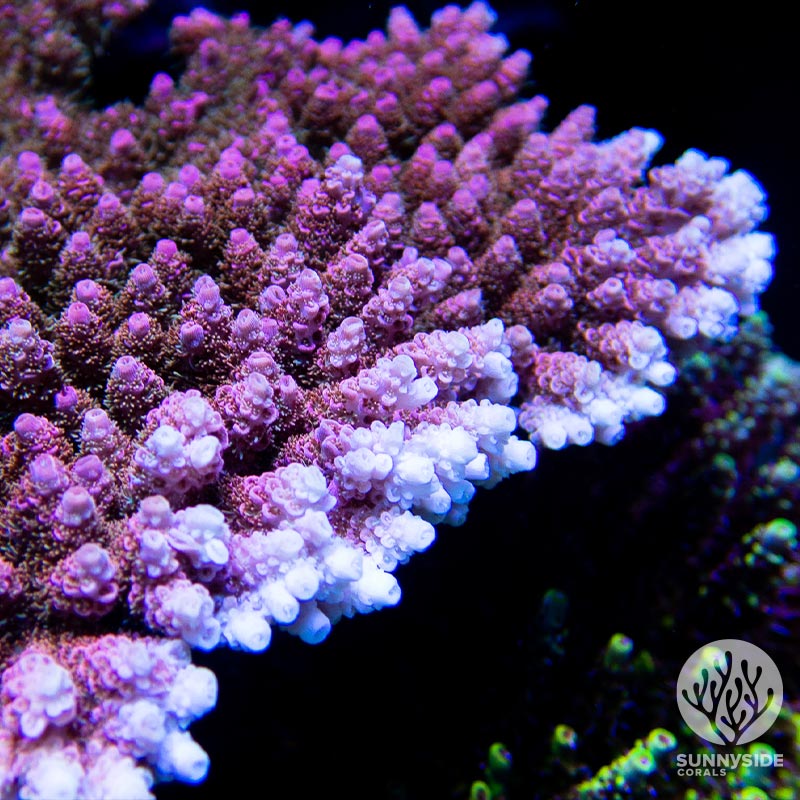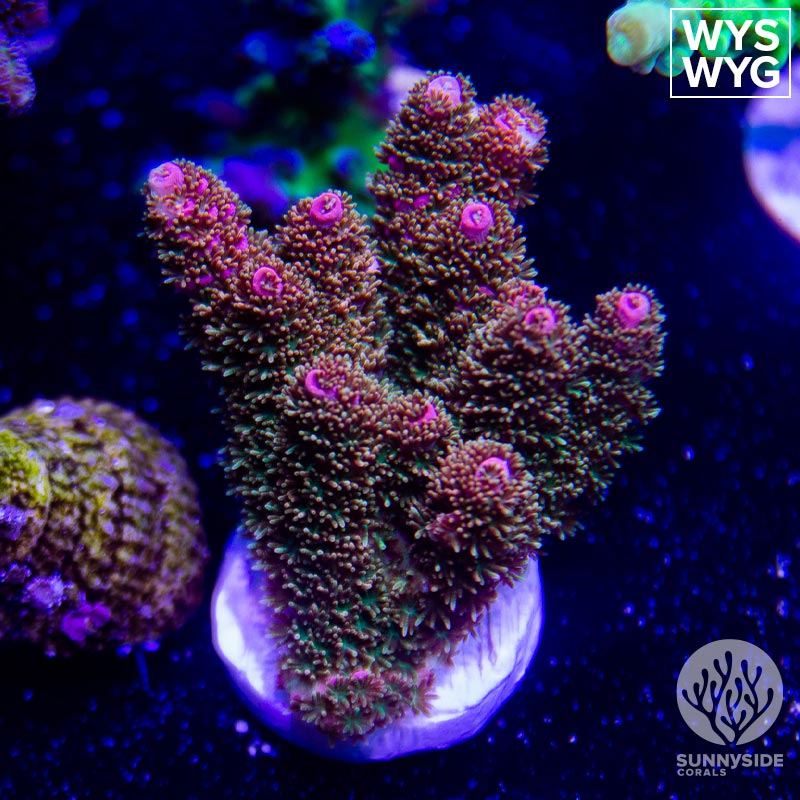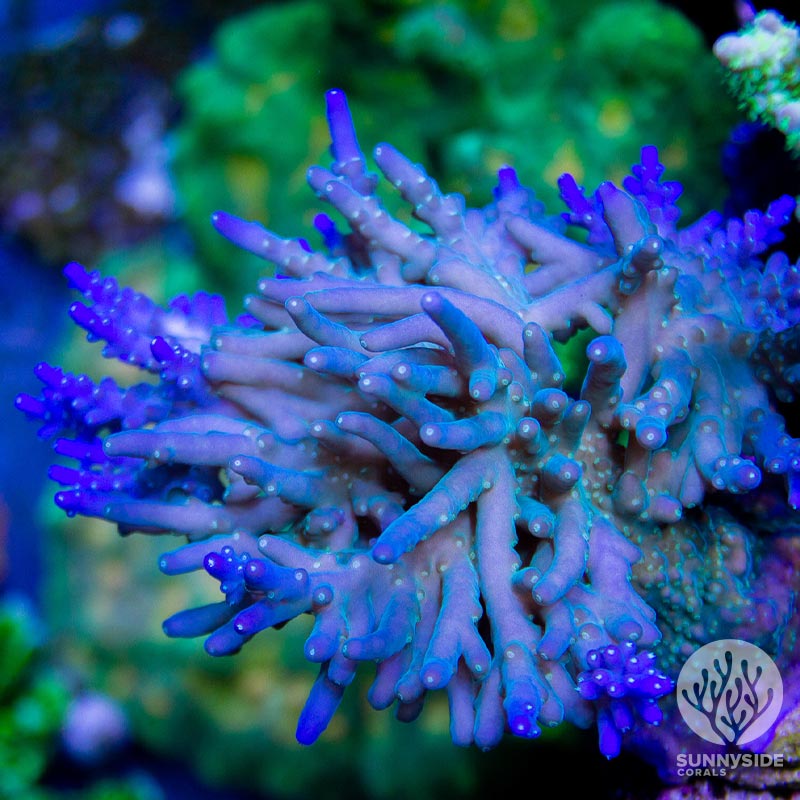Acropora corals are one of the most popular and sought-after species in the reef-keeping hobby. They are known for their beautiful colors, intricate growth patterns, and fast growth rates. However, they can be difficult to propagate due to their delicate nature, making fragging them a challenge for many hobbyists. In this article, we will discuss the best practices for fragging acropora corals and reducing stress on the coral during the process.
When done correctly, fragging acropora corals can be a great way to expand your coral collection, share your corals with other hobbyists and prune back unhealthy growth. However, improper fragging techniques can lead to stress on the coral, which can result in poor growth or even death. We will cover the tools and techniques necessary for successful fragging, as well as tips for promoting new growth and reducing stress on the coral.
Whether you are a seasoned reef-keeper or just starting out, learning how to frag acropora corals is an essential skill for any hobbyist. With the right tools and techniques, you can successfully propagate these beautiful corals and share them with others in the hobby. Follow our guide to learn how to frag acropora corals and reduce stress on your coral during the process.


Benefits of Fragging Acropora
Acropora corals are a popular choice for reef aquarium enthusiasts due to their beautiful branching structures and vibrant colors. However, these corals can grow rapidly and become too large for the aquarium, potentially causing damage to other corals or the tank itself. This is where fragging comes in as a useful tool for managing Acropora growth.
By fragging Acropora, you can promote healthier and more sustainable growth for your coral. When you cut off a branch or piece of the coral, it stimulates growth in the remaining fragments, encouraging the coral to grow in a more compact and manageable form. This can also help prevent the coral from becoming too large and shading out other corals in the aquarium or blocking too much flow.
However, it’s important to note that fragging should only be done on healthy and mature specimens. Fragging a sick or stressed coral can do more harm than good, and can even lead to the death of the coral. It’s also important to use proper fragging techniques and equipment to minimize stress and damage to the coral during the process.
Overall, fragging Acropora can be a beneficial practice for both the health of your coral and the sustainability of the hobby. With proper care and technique, you can enjoy a thriving and diverse reef aquarium while minimizing the impact on natural reefs.
Tools and Materials
Before you start fragging your Acropora, you will need to gather a few tools and materials. Here are some of the essential items you’ll need:
- Sharp scissors or a scalpel
- Bone cutters or pliers
- Latex gloves
- Eye protection
- Containers for the frags and mother colony
- Glue or epoxy
- Reef-safe cutting board or surface
- Bucket of saltwater
- Bandsaw with a diamond blade (optional)
It’s important to use sharp tools to make clean cuts and minimize stress on the coral. Dull tools can crush or tear the coral tissue, leading to damage or death. You should also wear latex gloves and eye protection to protect yourself from any potential irritants or toxins in the coral.
When choosing containers for your frags and mother colony, make sure they are clean and free of any contaminants or residues. You can use plastic cups, Tupperware, or other similar containers. Just make sure they are large enough to hold the frags and provide enough space for water flow. We typically have a holding container and a rinse container. When breaking off new frags there is often slime and debris that you need to rinse off.
For attaching the frags, you can use either glue or epoxy. Make sure to use a reef-safe product that won’t harm your coral or other inhabitants. We have found that super glue gel is the best option. Make sure it is the Gel type or it won’t work.


Section 4: Preparation
Preparing the Fragging Site
To prepare the fragging site, you’ll need a few tools and materials. First, set up a clean and well-lit workspace. Make sure you have access to clean saltwater for rinsing and dipping the corals (two separate containers). You’ll also need a fragging kit that includes a sharp scalpel or bone cutter, frag plugs or tiles, and frag glue or putty. Next, prepare the acropora colonies for fragging. Turn off the aquarium pumps and let the water settle for a few minutes. Remove the acropora colony from the tank and place it on a clean and dry surface. Start by using a scalpel or bone cutter to carefully cut the coral into frags. Make sure each frag has a healthy and intact polyp. We typically preper to not cut our frags under 1 inch as survival rates drop when cut smaller. Place each frag on a frag plug or tile and secure it with frag glue or putty. Finally, return the frags to the aquarium and turn on the pumps.
Taking your coral out of your tank is not always possible. If you are careful you can reach into your tank and use your bone cutters to break off frags inside your tank. Be very careful when doing this, as you might easily lose the frag in your tank or cause damage to surrounding colonies. When fragging this way, you will still want a container to rinse your new frags in close by to properly clean and prep your new frag.
Fragging Techniques
Method 1: Using Bone Cutters
One of the most common methods of fraggin acropora is to use bone cutters to break off a piece of the coral. Here are the steps to follow:
- Choose a healthy coral with a thick branch or stem to frag.
- Place the coral on a flat surface, such as a cutting board or piece of tile.
- Using a pair of bone cutters, make a clean cut through the coral branch or stem by firmly cutting at the base of the branch you want to cut.
- Once the coral has been cut, rinse the new frag in a container of tank water.
- Place the new frag on a frag plug or piece of rubble and secure it with glue or putty.
Method 2: Use a Bandsaw with a diamond blade
Another method that we like to use is to cut our acros with our Bandsaw which has a diamond blade. This creates a precise, clean cut that is sometimes necessary with certain growth patterns.
- Choose a healthy coral with a small branch or stem to frag.
- Position the coral so you can reach the base of the stem with your blade.
- Slowly push your coral through making sure to not put too much pressure on your blade.
- Once the coral has been cut, rinse the frag and colony out in a container with your tank water. Remove any residue that is on the coral.
- Place the new frag on a frag plug or piece of rubble and secure it with glue or putty.
It is important to note that fragging can be stressful for corals and should be done with care. Always use clean tools and follow proper safety precautions when fragging. If you choose to use a bandsaw, always use a diamond blade to ensure you do not cut yourself. Additionally, be sure to give the new frags time to heal and acclimate to their new environment before making any adjustments to their placement or water flow.
Post-Fragging Care
Placement of Fragged Pieces
After fragging your acropora, it is crucial to place the frags in the right location. Make sure to choose a spot with good water flow and lighting. Acropora frags require high lighting, so placing them in a shaded area will not be suitable. Also, ensure that the frags are not in direct contact with other corals, as this can cause damage to both corals.
Water Quality
It is essential to maintain good water quality after fragging your acropora. Keep an eye on the water parameters, including temperature, pH, salinity, and nutrient levels. High nutrient levels can lead to algae growth, which can harm the acropora frags. Regular water changes and the use of a protein skimmer can help maintain good water quality.
Lighting
Acropora frags require high lighting levels to thrive. Ensure that the light intensity is appropriate for the species you are fragging. If you are unsure, research the lighting requirements of the species or consult with an expert. Also, make sure to adjust the light intensity gradually over time, as sudden changes in lighting can shock the acropora frags. In conclusion, proper post-fragging care is crucial for the survival and growth of your acropora frags. Ensure that you place the frags in the right location, maintain good water quality, and provide appropriate lighting. With proper care, your acropora frags will thrive and grow into beautiful corals.
For a full rundown on best practices for acropora coral care check out our category page.
Conclusion
Propagating acroporas can be a rewarding and exciting experience for any reef hobbyist. With the right tools, techniques, and knowledge, you can successfully grow and maintain a thriving acropora coral reef. Remember to always prioritize stability and consistency in your reef tank environment, and to research and follow best practices for acclimating new frags.
When fragging acroporas, be sure to use clean, sharp tools and to handle the corals with care. Take your time and follow a step-by-step process to ensure the best chances of success. Adequate flow and lighting are also crucial factors to consider when propagating acroporas.
Additionally, it’s important to monitor your acropora frags closely for any signs of stress or disease. Keep an eye out for changes in color, texture, or behavior, and take action immediately if you notice any issues. Regular water testing and maintenance can also help prevent problems before they arise.
Overall, fragging acroporas requires patience, attention to detail, and a willingness to learn and adapt. With the right approach, you can enjoy the beauty and diversity of these stunning corals in your own reef tank for years to come.
FAQ Section
What is the easiest coral to frag?
The easiest coral to frag is a soft coral, such as a mushroom coral or a Xenia coral. These corals are typically easy to cut and propagate, making them great for beginners.
How do you start fragging corals?
To start fragging corals, you will need a few tools, including a sharp scalpel or coral cutter, gloves, and safety glasses. Next, you will need to select a healthy coral colony and carefully cut a small piece off the edge of the colony. Make sure to clean the frag before placing it in your desired location in your tank.
Does fragging hurt corals?
Fragging can be stressful for corals, and there is a risk of damage or infection during the process. However, if done carefully and with proper tools and techniques, fragging can be a beneficial way to propagate and expand your coral collection without harming the original colony. It is important to ensure the health and safety of both the original colony and the new frags.
